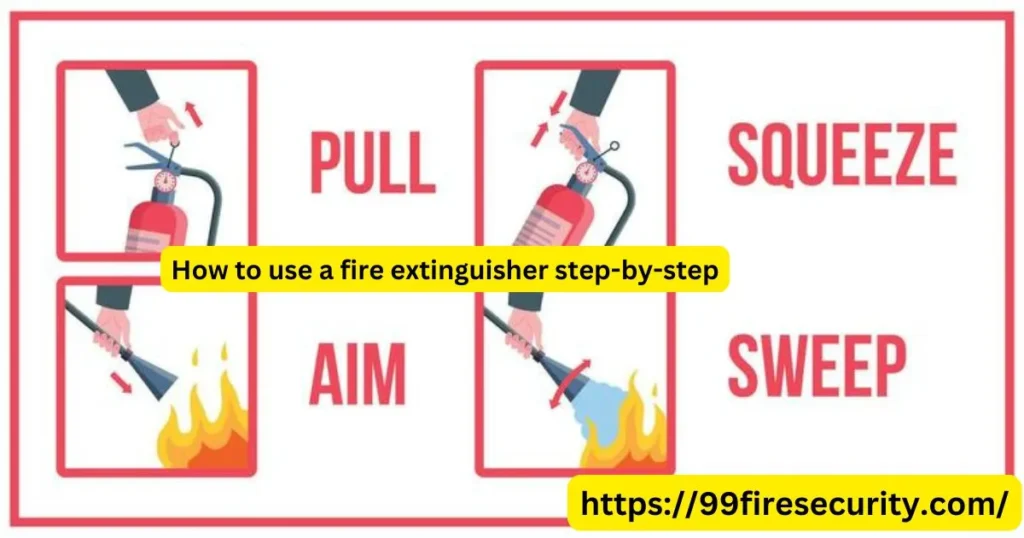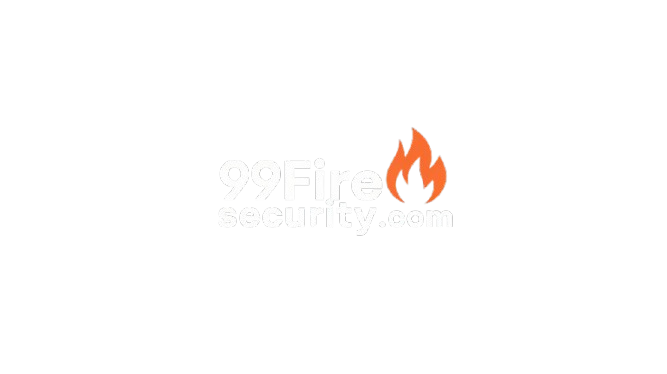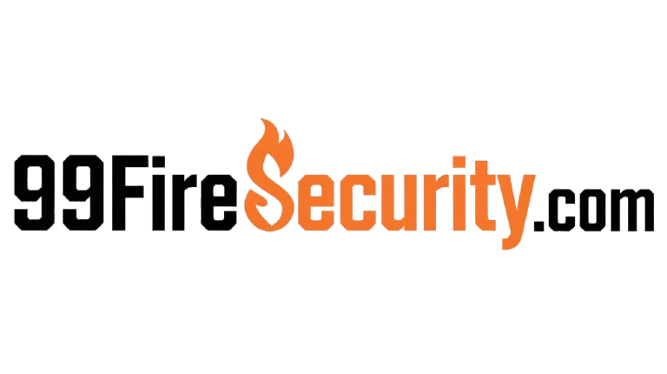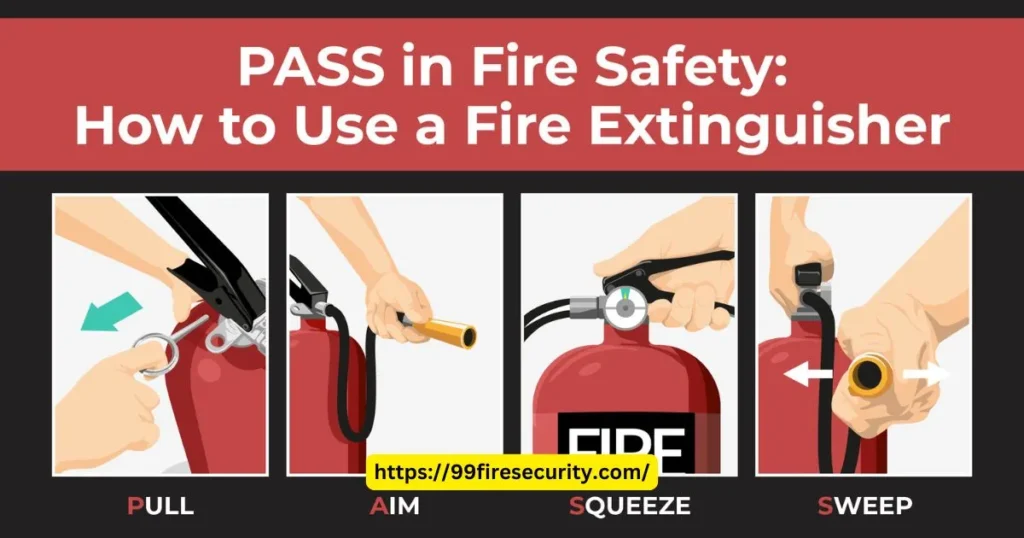Fire Extinguisher: A lifesaving tool if used properly, but it is essential to know which type to use and when. This guide outlines the basic steps for using a fire extinguisher safely and effectively. Whether at home, work or in a public achievement, having this knowledge could do all the difference in an emergency.
Learning a Little About Fire Extinguishers
What is Fire Extinguisher?
A fire extinguisher is a device, portable, or otherwise, that releases an agent to extinguish small fires. They are used mostly as a first line of defense against fires that are still truckleable. Fire extinguishers are rated by what kind of fire(s) they’re intended to extinguish. Indeed, deploying the wrong type of extinguisher onto a fire can make matters worse, hence the importance of knowing their function and limitations.
Fuel source plays a primary role in what type of fire extinguisher you will need.
If a fire breaks out in a building, using water to extinguish it is not always the best method. Knowing these types helps ensure you’re prepared to extinguish the fire in a safe manner.

Water-Based Extinguishers
These are used for Class A fires involving solid combustible materials, such as wood, paper or cloth. But they should never be used on electrical or grease fires.
Foam Extinguishers
Foam extinguishers are effective against Class A and Class B fires (caused by flammable liquids, such as petrol or oil).
Types of Dry Chemical Extinguishers
Dry chemical extinguishers, the most versatile variety, can put out Class A, B, and C fires, so they’re a good choice for homes and businesses.
Carbon Dioxide (CO2) Fire Extinguishers.
For electrical fires and Class B fires (like those caused by oil or gasoline), and leave no residue and can be used near sensitive fire safety Equipment.
Typical Fire Extinguisher Ratings
Fire extinguishers are categorized by ratings, including A, B, C or D to signify what type of fire they can extinguish. For example:
- Class A: Fires of ordinary combustibles.
- Class B: Flammable liquids fires.
- Class C: Flammable electrical equipment.
These ratings let you know that you’ve got the right type of extinguisher for the job.
Before You Use a Fire Extinguisher
Assessing the Situation
Instead of being reactive and immediately going for a fire extinguisher, first assess the fire. Is it small and contained? Is there a way to reach the fire without endangering yourself? IF THE BLAZE IS TOO BIG OR SPREADING FAST, THE SAFER MOVE IS TO GET OUT AND CALL FOR HELP.
Evacuate and Call for Help First Loading
Fire extinguishers are not replacements for firefighting professionals. Be sure someone has called 911 or the proper emergency number before trying to put out a fire. Evacuate nearby people and maintain a safe exit.
Safety Precautions
Here are some safety tips to keep in mind when using a fire extinguisher:
- Keep low, so you don’t breathe smoke.
- Always have your back to an exit.
- Do not use an extinguisher if you do not know how it works or what type it is.
The PASs method is an accepted method of using fire extinguishers. It is simple and nice to memorize in high stress situations.
P – Pull the Pin
The first step in fire extinguisher operation is to pull the safety pin. Near the handle, there is a pin that prevents an accidental discharge. After removing it, the extinguisher is ready to use.
A – Aim the Nozzle
Aim the nozzle or hose at the depth of the fire, not the flames. Fires branch outward from their center, so getting at the base is the key to making sure they get put out.
S – Squeeze the Handle
Firmly grip and squeeze the handle, discharging the extinguishing agent. You do not want to lose control of the extinguisher because you are not prepared for the recoil.
S – Sweep Side to Side
Angle the nozzle downward and use a sweeping motion to cover the entire base of the fire. Keep spraying until the fire is out or you run out of extinguishing agent.
How To Use a fire extinguisher — A step-by-step guide
Ideal Distance to Stand
Always keep your distance — 6 to 8 feet — when approaching a fire with an extinguisher. This keeps you out of reach of heat and flames but close enough for the extinguisher to be effective. When the fire is no longer threatening, safely move closer to make sure it is out.
Where to Aim Your Fire Extinguisher
A common mistake is pointing the extinguisher at the flames rather than the fire’s source. The flames can appear frightening, but dousing the base starves the fire of its fuel. Try to keep the nozzle at the bottom edge of the burning base and sweep side to side to ensure the source is adequately covered.
Watch for Re-Ignition
Once the fire is out, monitor for re-ignition. Some fires may flare up again because of lingering heat or smoldering materials. If that happens and you’ve used your extinguisher, leave your home right away and wait for the fire department to arrive.
Fire Extinguishers Inspection and Maintenance
Regular Visual Checks
To check that your fire extinguisher is ready when you need it, review it monthly:
- Ensure the pressure gauge is in the green.
- Check for dents, leaks or corrosion.
- Make sure the pin is properly inserted and the handle operates.
Arrange for a Service Visit
Fire extinguishers even require professional servicing every twelve months despite being visually checked regularly. Certified technicians will make visual checks on internal components, ensure proper pressure levels, and confirm that the extinguisher fits safety standards.
How to Change or Refill an Extinguisher
Fire extinguishers that have been used even partially need to be recharged or replaced. Call a local fire safety company to recharge it or toss the old one and buy a new one if it’s old or damaged.

When Not to Use a Fire Extinguisher
Large Fires
If a fire is spreading quickly or producing intense heat, or it is too large an area on fire, it’s too much for a fire extinguisher. Get out of there and call 911.
Types of Fire That Need Special Extinguishers
Others, like fires associated with chemicals or metals, need extinguishers that aren’t usually found. Using the wrong extinguisher can cause the fire to grow and put you in danger.
Toxic Fumes or Smoke
If the fire is fed by materials that produce toxic fumes — like plastics or chemicals — evacuate immediately. Inhalation of smoke is a major cause of injuries and deaths from fire.
Common Mistakes to Avoid
Ignoring the PASS Method
Not following the PASS method can compound a stressful situation. Neglecting to remove the safety pin or aiming incorrectly may cause the extinguisher to not work. Get ahead of it and practice this trick to develop muscle memory.
Using Incorrect Type of Extinguisher
This is because each type of fire extinguisher is intended for certain types of fires. For instance, using a water extinguisher on an electricity fire can lead to electrocution. Check the label always, and make sure the extinguisher matches the type of fire.
Inadequate Fire Training
What even the best fire extinguishers won’t be able to help you with is the impact of their usage without proper training. Familiarise yourself with extinguisher use by attending fire safety workshops or drills.
Fire Safety Training Benefits
Building Confidence
Fire training prepares a person on how to react in an emergency. Knowing how to use the fire extinguishers will help you not to hesitate when every second is crucial.
Increasing Preparedness
Having fire training ensures workplaces and households know how to react in an emergency situation. This helps to prevent damage to property and saves lives in some cases.
Helping Prevents Panic in Emergencies
A fire can make you panic, which clouds your judgment. Training gives you calm and a path to follow so that you can strike in response.
Regulatory and Corporate Regulations
The Basics of Fire Extinguisher Training
Some industries require fire extinguisher training for specific employees in compliance with Occupational Safety and Health Administration (OSHA) regulations. This knowledge includes the types, placement, and proper use of extinguishers.
Importance of Fire Drills
Fire drills are perfect to instill the significance of preparedness. They include evacuation routes, meeting places and information about how to use fire extinguishers.
Where to Place Fire Extinguishers in Buildings
Make sure to have fire extinguishers placed strategically around the building. They should be clearly visible and be located near exits, kitchens, and other high-risk areas.
Before we begin, a note on the date range:
One Size Fits All” Myth on Extinguishers
Not all extinguishers are suited for every fire. A CO2 extinguisher might not be effective at tackling a wood fire, for example. Read the labels carefully and select the right kind.
Recharging Partially Depleted Fire Extinguishers
A partially used extinguisher may not function properly upon next use. Do not replace or recharge it only after heavy usage.
Fire Services Cannot Be Replaced by Extinguishers
Fire extinguishers are tools, not a replacement for the fire department, for small fires. In serious emergencies always call for professional assistance.

Other Fire Safety Tips
How to Place Smoke Detectors
Smoke detectors are your first line of defense against fire. Install them on every level of your home and test them monthly to make sure they’re working.
To Make a Strategy for Your Emergency
Create a fire safety system plan that includes escape routes and a meeting place. Discuss the plan with all members of your household or workplace.
Practicing Emergency Procedures
Know when you may go through the supermarket — especially if you have specific privileges, such as a senior citizen designation. Knowing procedures helps reduce panic and improve safety when a fire actually occurs.
Conclusion
To use a fire extinguisher correctly, you need to prepare, practice, and have the right understanding. You can take decisive action during a fire emergency by learning the PASS technique, selecting the appropriate extinguisher, and knowing when to make your escape. Pair these skills with routine maintenance and fire safety training, and you’ll be ready to prevent and manage what matters most.
FAQs
What do I do if my fire extinguisher has been used?
Immediately replace or recharge the extinguisher after any use. Reach out to a local fire safety provider for service.
Is anyone allowed to use a fire extinguisher?
Yes, but training is required to use safely and effectively. Build confidence by attending fire safety workshops.
Alternatively, how often should I check my fire extinguisher?
Conduct visual inspections monthly and arrange for servicing by an expert at least once a year.
What if I’m unable to extinguish the fire?
Get out right away and call 911. Do not put your life in danger for material things.
Can you reuse fire extinguishers?
Provided they’ve been commercially recharged. Do not attempt to reuse partially used extinguishers without recharging.


